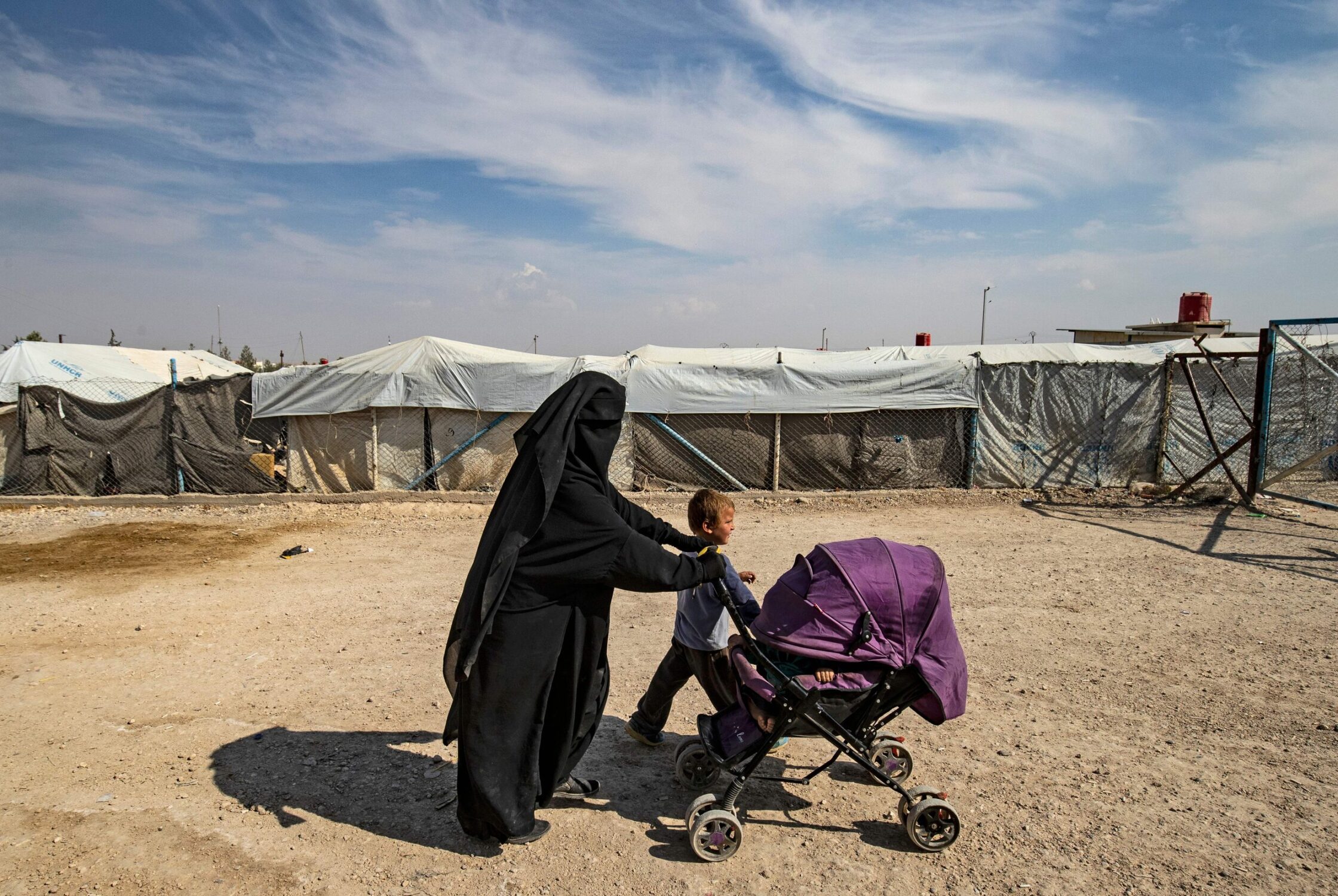The Future of Al Hol Camp in the Face of COVID-19

As the civil war in Syria continues for a tenth year, the COVID-19 pandemic threatens vulnerable communities inside the country and risks compounding the devastation Syrians have already endured. As of the time of writing, there have been 146 confirmed cases and six related deaths within Syria. However, given the lack of testing capabilities in the country, the number of infections is likely much higher.
Furthermore, the poor condition of Syria’s health infrastructure after years of conflict will make it difficult to contain and treat the virus. Although COVID-19 poses serious risks to all Syrians, displaced people living in Al Hol camp in the northeast Deir ez-Zor region are especially vulnerable to the virus. Even amid the threat of the pandemic, authorities must pursue a long-term strategy of improving conditions in the camp and ensuring the safe, dignified, and voluntary return of its residents in order to alleviate this untenable situation.
An Introduction to Al Hol
In 1991 during the Gulf War, Al Hol camp opened to house Iraqi refugees, although it was later re-purposed in April 2016 to host both Iraqi refugees and displaced Syrians. Today, about 66,000 people live in the camp, an area smaller than two square kilometers. There are an estimated 30,000 Iraqis, 25,000 Syrians, and 10,000 people from elsewhere around the world. Roughly two-thirds of camp residents are children. Some camp residents have family ties to members of the Islamic State.
Conditions in Al Hol are unsanitary and unsafe. Residents lack clean water, adequate food, reliable medical services, and sufficient security. Although the Syrian Democratic Forces (SDF) have assigned guards to monitor the camp, a small number of camp residents have committed acts of violence—including beatings and stabbings—against other camp residents and the guards themselves. There are also reports of residents deliberately setting fire to other residents’ tents. Poor conditions in Al Hol stem in large part from overcrowding. As long as the camp population remains overcrowded, it will be difficult to improve sanitation, services, and security.
At the root of these issues is an inability to reduce the camp population by returning camp residents to their original communities. Many residents have petitioned their respective home governments—in countries as diverse as Iraq, France, and Australia—through family members, lawyers, journalists, and other advocates to return. However, few have been successful.
Government officials around the world have largely neglected their responsibilities to facilitate the return of their citizens from Al Hol. Now, in an effort to prevent the spread of COVID-19, governments have restricted border crossings and almost completely halted returns.
Syrian officials and other government officials with citizens in the camp face a choice: either continue to ignore Al Hol and let conditions further deteriorate, or improve conditions in the camp and develop a long-term strategy to reduce the camp population by returning camp residents to their original communities.
Camp Conditions Increase COVID-19 Risk
At the time of writing, there are no confirmed cases of COVID-19 among residents in Al Hol camp. However, there have been three confirmed cases in Hasakah governorate, where the camp is located. Authorities and camp residents worry about what will happen if the virus reaches the camp, especially because conditions in Al Hol—as in other refugee and internally displaced persons camps—lend themselves to the spread of the virus.
First, overcrowding makes social distancing nearly impossible. Al Hol has a population density of 37,570 people per square kilometer, meaning each camp resident lives within an area comparable to a single parking space.
Second, access to water, soap, and adequate sanitation facilities is limited, making good hygiene practices impossible. Hasakah governorate has few natural sources of water and has experienced intermittent drought in recent years. Water access in the area is even more precarious as Turkey sporadically shuts off water to Hasakah to gain political leverage over the autonomous Kurdish regional government. UNICEF and other aid organizations have responded by trucking in water to the camp, but this barely covers minimum needs.
Third, many camp residents are already in poor health due to high levels of stress, exposure to harsh weather, and poor nutrition. Altogether, these conditions compromise residents’ immune systems, making them more susceptible to contracting COVID-19 and developing severe symptoms if infected.
Beyond COVID-19
COVID-19 has highlighted the untenable nature of Al Hol and the inability of the SDF to sustain the current number of residents. In the near term, authorities must work to protect camp residents and guards in Al Hol from COVID-19 by disseminating information about the virus and prevention measures, improving access to water, soap, and sanitation facilities, and preparing and utilizing adequate isolation facilities outside of the camp. However, even as COVID-19 continues to pose immediate challenges, authorities must also pursue a long-term strategy of depopulating the camp through safe, dignified, and voluntary returns of camp residents to their original communities in Syria, Iraq, and beyond.